One of Phyllis’ professed reasons for coming to Sicily was to
see the best Greek ruins not located within the ruined economy that is Greece,
and so today starts to satisfy that desire.
Craig is not quite as focused on ruins but cheerfully humors her and
navigates us first to
Segesta, one of the most heavily advertised sites in
Sicily. It’s actually pretty small,
containing one virtually intact (by ancient ruin standards) Doric Greek temple
from about 430 B.C. and also a Roman amphitheater on another hilltop within the
site. Like most desirable Sicilian
locations, this site was occupied by a revolving door of civilizations, and the
uppermost castle is from Norman times (thirteenth century A.D.) while some of
the surrounding hillside shows earlier Arabic influence. They all build on top of the prior structures
(to the extent they don’t simply raze it and rebuild using the
same materials).
Presents a challenge for archaeologists
to interpret it all. All of Sicily has
labored under a succession of invaders and we are seeing this juxtaposition of
cultures and structures everywhere. Currently,
a couple of these old stone huts are used by shepherds tending the local flock,
which is kept here to control the vegetation, a pretty clever approach.
We leave Segesta for Selinunte, a much larger but less
developed site on the coast to the
southwest.
The weather is still gray and threatening, and this tends to keep the
other tourists to a minimum. Both
Segesta and Selinunte seem to be popular destinations for tour groups but we
have so far managed to avoid the few who wander about. This is especially so at Selinunte, where the
weather threat is fulfilled when it starts raining about halfway through our
site visit. The busload of students who
are following us give up and we again have an entire site to ourselves.
Selinunte is more haunting than Segesta, in part because
there are collapsed ruins over a huge area, about 270 acres. It was one of the largest Greek cities in its
heyday, with over 100,000 residents, before it was destroyed by Hannibal and
most of its inhabitants massacred in 409 B.C.
It is in an earthquake-prone area, so despite some reconstruction by
successive occupants, it was given up for good after a big earthquake in the Middle Ages. As a result, the entire
area, at least the parts cleared of brush and excavated, are a jumble of fallen
columns and collapsed stone structures.
The acropolis (main temple area) and a second peripheral temple area are
the
only cleared areas, with limited restoration. You look from them out over a sea of brush
where the city of 100,000 inhabitants actually lived. It’s an eerie sensation, especially standing
there in the rain, to think about all the beauty and then the destruction that
occurred here. Craig thinks it is also a
wet sensation and so we keep moving around the site.
Though limited, the reconstructed temples are
impressive. On the acropolis, one temple
(Temple C, thought to be dedicated to Apollo) dominates the landscape, though
it now
consists of just one wall of columns. On the second temple site, another temple
(Temple E) has been more thoroughly reconstructed. The metopes and friezes from many of these
ruins have been taken to the Archaeological Museum in Palermo, which is unfortunately
closed until April. At least they are in
country, as opposed to somewhere like the British Museum.
The rain abates as we finish wandering about the acropolis,
and we head to Marsala for another unplanned drive around another old medieval
town center looking for our hotel.
The
hotel turns out to be another delightful place, a restored 12th
century monastery. There is an even more
helpful front desk clerk who first helps us find a parking place (a real bear
in these constricted old town centers) and then recommends another great
restaurant (curiously named “Il Gallo e L’Innamorata”, “The Rooster and the
Lover”… there must be a story there –
other than
Craig’s uninformed speculation -- and we have to Google it
sometime). It pours rain but we venture
out on the main corso (pedestrians only at night) with sturdy umbrellas loaned
by the hotel. We indulge in a full seafood
antipasti course with about six separate dishes and then one main course rather
than the two that are found on all Italian menus, and still return to the hotel
stuffed. The food was excellent as was
the after dinner Marsala wine.

 Marsala, Sicily, Italy
Marsala, Sicily, Italy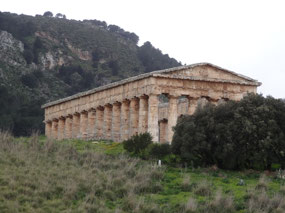
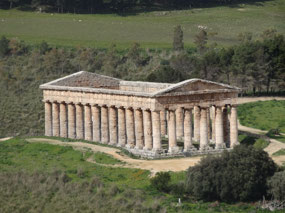

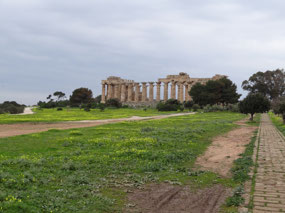
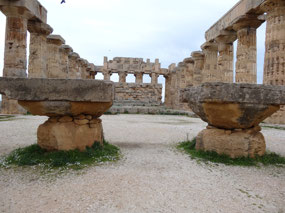
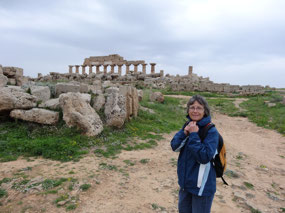
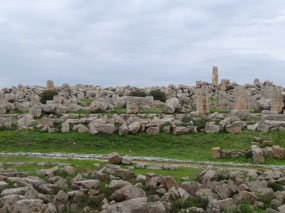
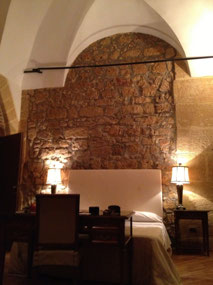




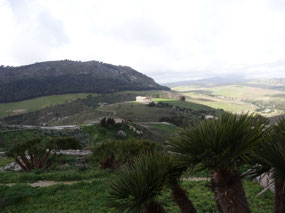
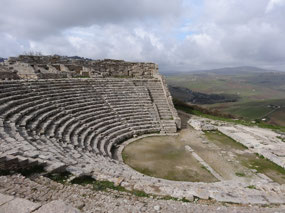

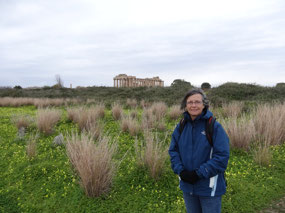
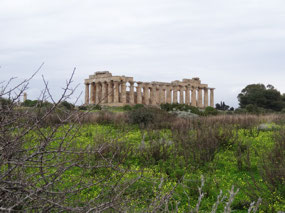
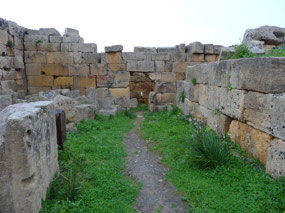
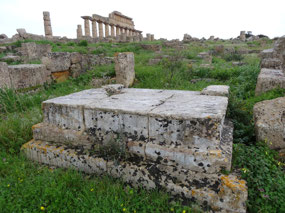
2025-05-23